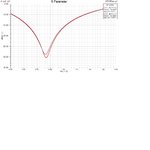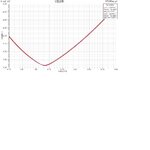shaikss
Full Member level 4
S and Z-parameters for dipole antenna using HFSS?
Folks,
I am trying to design an antenna for UHF RFID, resonating at 865MHz using HFSS.
I started with a simple dipole antenna.
But when I tried to simulate the same using HFSS, I had seen VSWR > 2, in the order of seven.
What are the different methodologies to be used to have antenna with lower VSWR?
I have taken the design parameters as below:
Lambda = 346mm
gap_src = 1.2mm
res_length = 0.48 * lambda
dip_length = res_length - gap_src/2
dip_radius = lambda/200
radiation_rad = dip_radius + lambda/4
radiation_height = dip_length + gap_src/2 +lambda/10
I have attached .hfss file and the results.
I tried to vary the gap_src from 0.125 to 1.5 and multiple of lambda for resonating length from 0.45 to 0.5. I have succeeded in getting VSWR < 2 but S-parameters are high and couldn't succeed in acheiving z-parameters. I am unable to get all correct parameters at a single shot. Pls help me in solving this.
Thanks!
Folks,
I am trying to design an antenna for UHF RFID, resonating at 865MHz using HFSS.
I started with a simple dipole antenna.
But when I tried to simulate the same using HFSS, I had seen VSWR > 2, in the order of seven.
What are the different methodologies to be used to have antenna with lower VSWR?
I have taken the design parameters as below:
Lambda = 346mm
gap_src = 1.2mm
res_length = 0.48 * lambda
dip_length = res_length - gap_src/2
dip_radius = lambda/200
radiation_rad = dip_radius + lambda/4
radiation_height = dip_length + gap_src/2 +lambda/10
I have attached .hfss file and the results.
I tried to vary the gap_src from 0.125 to 1.5 and multiple of lambda for resonating length from 0.45 to 0.5. I have succeeded in getting VSWR < 2 but S-parameters are high and couldn't succeed in acheiving z-parameters. I am unable to get all correct parameters at a single shot. Pls help me in solving this.
Thanks!
Attachments
Last edited:

